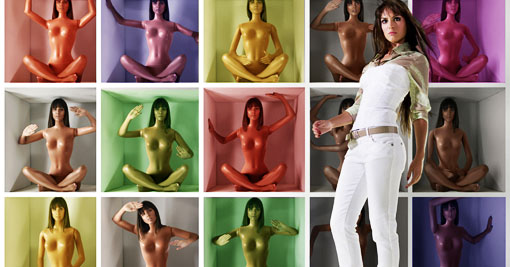Diversity: A quick recipe for a nightmare?
Posted on December 18, 2011 | posted by:
What is Transdicsiplinary Design? This is a good question, with a long answer, which I’m not going through it now. But I can give you an idea; As described in the web page of the program, we TDs, as we call Transdesciplinary Design, are here to practice:
- Reflective collaboration: working flexibly in multidisciplinary teams to solve highly complex problems
- Complexity modeling: visually modeling complex systems and social structures to yield new insightsCritical reframing: examining problems and turning them into design opportunitiesDesign-led research: articulating a research problem and exploring it through a design processFitness prototyping: discovering an appropriate resolution of a problem that belongs to no single design field.
It sounds great, but how are we supposed to do these? First, it has been attempted to reflect diversity and complexity of real world in the group of students attending the program. We are from different backgrounds, ranging from Economics, to architecture, to fashion design. We are also from very different countries and regions: Far and Middle East, Europe, South and North America. So we can say that we have a quiet multidisciplinary human resource.
Second, we are allowed to explore courses offered in different schools in the university and pick the ones that we like as the elective courses.
And finally the nature of projects defined during courses is very diverse and require different attitudes and skills.
Taking a glance, you can see diversity everywhere. But is diversity the road to happiness? I think it is not the end of story. By reflecting the diversity of real world in the program, we should expect the complexity, uncertainty, and problems arisen by that diversity, are coming in too. But why should diversity is accompanied by complexity?
One reason is communication interfaces within the system. This is one of the most difficult and challenging issues in analyzing, designing, and managing a system to handle what happens in the interface of different elements. As you increase the diversity and number of these elements, you are also increasing the amount and types of interfaces and handling them would become even more difficult.
to give an example, consider diversity in background of students. I have an engineering and business background; I’m used to be very logical and practical; I speak through words, diagrams and numbers. On the other side I have fellows with graphic design backgrounds; they are more visionary and speak through colors and shapes. To be able to integrate our complementary capabilities and work together, we have to establish a meaningful dialogue. In other words we need an effective communication interface. Otherwise we are physically sitting next to each other and work on the same project, without having an interaction.
Even worse comes up when each of us wants to guide the project in a way that she thinks it is right. Then, with all the different backgrounds and mindsets, where does the project finally end up? Probably nowhere. Unless …
Unless you are able to integrate all this diversity into a body. I chose the word “body” for some reason. Our body is a great example of different elements, working based on very simple chemical and physical rules, each accomplishing a different task to help the body as a whole doing very complex meaningful activities, like dancing.
Nature or whoever has built this body, has not piled some brain, arms, stomach and etc on each other, hoping they stick together and go on their own way. These organs are actually shaped into the body through a process of pregnancy. This body is not what arms and feet and brain have “decided”, but it is dictated from outside. But then when the body is created, it is almost autonomous. It works and decides by itself in a coherent smooth way and could go in every imaginable and unimaginable way.
To me, this is an ideal model for Trandesciplinary program: some intention, and basic rules to create the child and then stay back and watch what it does …
